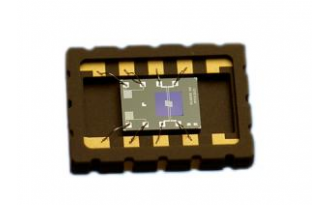What are the principles, characteristics and applications of the thermal conductivity gas sensor MTCS2601?
Sensing principle of thermal conductivity gas sensor assembly MTCS2601
The silicon wafer of the sensing film and the MTCS sensor is equipped with two metal integrated thin film resistors, which are used as the sensing element and the temperature sensor respectively. The power required to operate such a miniature sensor is usually 2mW, making this type of sensor particularly capable of operating at low power. The thermal conductivity/diffusion rate of the gas changes the temperature of the sensing resistor. The output signal is linear with gas concentration without saturation effect, and has nothing to do with flow.
Switzerland Neroxis provides gas and pressure sensors, pre-calibrated modules and online probes to cover a variety of applications in the field of environmental and industrial control. Shenzhen Gongcai.com is the agent of Neroxis' full line of products, including sensors, modules, online probes, etc. Its key advantages are as follows:
Miniaturization of sensors
Low energy consumption of sensors and modules suitable for portable instruments
Provides temperature, humidity, and pressure compensation pre-calibrated modules that can be directly incorporated into OEM equipment
The working principle of the gas microthermal conductivity sensor (MTCS) relies on the transfer of heat flow from the heating resistor on the insulating dielectric film to the cold part of the device. The heat flow directly depends on the conductivity of the gas. The principle is to measure the signals of the heating and "cold" parts of the equipment at room temperature.

High-speed response hydrogen sensor module based on MTCS2601
This miniature OEM module can be installed and used as a bare board module at any time. It integrates a rugged silicon micro-machine thermal conductivity sensor (MTCS2601) and temperature compensation. Optionally, a relative humidity sensor (SHT21) and a pressure sensor (MS5803-01BA) can be integrated on the module. Relative humidity sensor (SHT21) and pressure sensor (MS5803-01BA) can be selected on the module. A thermal conductivity sensor is integrated on the chip, and its principle enables a small H2 measurement/alarm system in the air with low power consumption and long-term stability. Download specific firmware with selected parameters in the Flash MTP microcontroller to modify the full-scale range and measurement rate.
Parameter characteristics of thermal conductivity gas sensor MTCS2601

H2 measuring range is 0-28000PPM, accuracy is 500PPM, response speed T90<1S
Application of Thermal Conductivity Gas Sensor MTCS2601
The thermal conductivity gas sensor MTCS2601 can be used in many applications. Due to the different specifications of different applications, Neroxis has developed a module for MTCS2601 that can work under a variety of conditions.
Neroxis provides optimized calibration procedures for each use condition (H2, temperature, relative humidity, and pressure range; background gas) to obtain the required H2 accuracy more economically.
The MGSM module based on the thermal conductivity gas sensor MTCS2601 can be used in the following applications:
H2 security alarms in home automation and industrial environments
H2 safety in production (electrolysis) and storage (fuel tanks, batteries)
H2 fuel safety in the transportation industry (cars, trucks, buses, airplanes, and ships)
H2 fuel safety and monitoring in power plants
Mini H2 sensor for fuel cell
A version with an ATEX module can be requested from the OEM on demand: considering the final product certification, this method must be carefully verified.
If you want to know more, our website has product specifications gas sensor MTCS2601, you can go to ALLICDATA ELECTRONICS LIMITED to get more information

